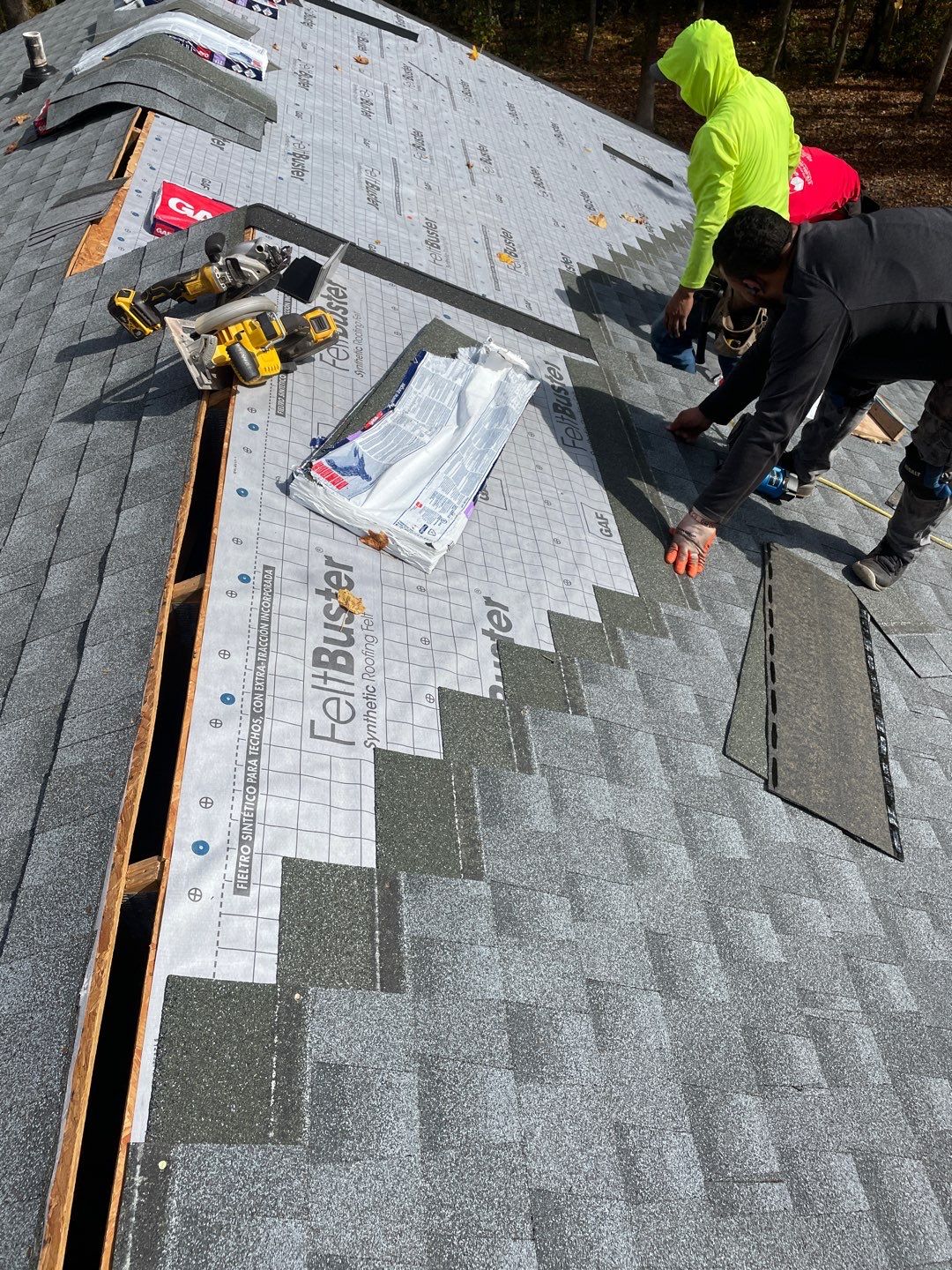Local Insights on Roofing Companies Gainesville Florida Homeowners Prefer
Local Insights on Roofing Companies Gainesville Florida Homeowners Prefer
Blog Article
Finest Practices for Ensuring Proper Roofing Ventilation
A well balanced consumption and exhaust vent ratio, generally 1:300, plays a critical function, with consumption vents preferably positioned at the reduced side of the roof covering for awesome air entry and exhaust vents at the peak for warm air leave. Maintaining insulation away from vents is vital to stop air movement constraint.
Understand Air Flow Essentials
Effectively understanding air flow essentials is crucial for making sure the long life and performance of roof covering systems. Reliable ventilation alleviates dampness accumulation and temperature level extremes in the attic room, both of which can cause substantial structural damages over time. A well-ventilated roofing aids in preventing usual concerns such as mold and mildew growth, wood rot, and ice dams, which can endanger the integrity of the roofing products and the underlying frameworks.
The main goal of ventilation is to assist in the movement of air, enabling a regular exchange in between the interior and outside environments. This balance is attained via a combination of consumption and exhaust vents that function with each other to keep optimum air movement. Consumption vents, normally located along the eaves or soffits, allow fresh air to go into the attic room, while exhaust vents, frequently positioned at or near the roof covering ridge, enable hot, humid air to get away.
Trick aspects affecting the effectiveness of roofing air flow consist of appropriate positioning, appropriate sizing, and guaranteeing that both consumption and exhaust vents are unhampered. Regular evaluation and upkeep are important to recognize potential obstructions, damages, or ineffectiveness in the air flow system, thus safeguarding the roofing's efficiency and durability.
Sorts Of Roofing Vents
Roof covering vents play a crucial duty in keeping efficient attic air flow and, by expansion, the overall wellness of the roofing system. Different kinds of roof covering vents are offered, each with special benefits tailored to details roof requirements. Ridge vents, for example, are installed along the roofing's peak, enabling cozy, moist air to leave from the attic. They provide constant ventilation and mix flawlessly with the roofline, making them both efficient and aesthetically pleasing.

Soffit vents are set up under the eaves and operate in tandem with roof vents to guarantee a balanced consumption and exhaust system. By enabling cooler air to enter from below, soffit vents help with the expulsion of warm air through top vents. Gable vents, located on the exterior wall surfaces of the attic room, deal one more efficient service, especially in homes with gable roofs.
Examine Your Existing Ventilation

Next, think about the age and problem of your roof covering products and ventilation parts. Older systems might not follow current building codes or might have weakened gradually, decreasing their effectiveness. Conduct a comprehensive examination to determine any type of indicators of damage, such as rust, damage, or voids that could compromise the system's efficiency.
In addition, determine the attic temperature level and moisture levels. High temperatures and moisture can indicate insufficient ventilation - roofing companies in gainesville florida. Make use of a hygrometer and thermometer to get precise analyses, contrasting them with exterior conditions. Relentless disparities recommend potential issues that need resolving.
Installment Best Practices
Effective setup of roof covering ventilation systems find out this here is paramount for guaranteeing optimal efficiency and longevity. Appropriate installation starts with recognizing the details air flow demands of the building and the roof covering it covers. This entails computing the correct ratio of consumption to wear down vents, generally adhering to the 1:300 policy, which specifies one square foot of air flow for every single 300 square feet of attic floor area.

The placement of vents is equally critical. Consumption vents need to be installed at the roof's lower side, typically in the soffits, to allow trendy air to go into. Exhaust vents, on the various other hand, need to be set up near or at the roofing's peak to assist in the exit of warm, moist air. This produces a natural air flow that aids maintain temperature level and moisture balance within the attic area.
Seal all air vent connections carefully to stop air leaks and prospective water infiltration. Usage premium materials and comply with producer guidelines to make sure toughness and performance. Additionally, integrating ridge vents with baffles can significantly enhance air flow effectiveness by protecting against wind-driven rain and snow from getting in the attic room.
Inevitably, precise installation of roof covering air flow systems mitigates potential issues such as mold and mildew development, ice dams, and architectural damages, making sure the roofing's honesty and the structure's total wellness.
Routine Maintenance Tips
Consistency in maintenance practices is essential to making sure the long-lasting effectiveness of Resources roof air flow systems. Routine assessments are vital, ideally executed biannually-- in the spring and loss. Throughout these examinations, make certain that vents are without particles, nests, and other blockages that could impede air movement. Look for any signs of dampness build-up or mold, as these can indicate improper air flow or leakages (roofing companies).
Use a soft brush or a vacuum to remove dust and debris from consumption and exhaust vents. Be cautious not to damage the air vent displays or louvers throughout the process.
Correct insulation is equally important. Make sure that attic room insulation does not block the vents, as this can seriously limit air flow. Reposition or change it to maintain an efficient obstacle. if any insulation has actually shifted or worked out.
Lastly, change any damaged or missing elements promptly. Damaged vents, split shingles, or deteriorated blinking can all add to poor air flow and must be addressed immediately. Routine upkeep makes sure that the roof covering air flow system operates efficiently, therefore extending the life expectancy of the roof covering itself.
Final Thought
Ensuring appropriate roof covering ventilation important source is extremely important for preserving the effectiveness and sturdiness of a roofing system. Adherence to the 1:300 intake and exhaust air vent proportion, coupled with the critical placement of vents, is crucial.
A well balanced intake and exhaust air vent ratio, frequently 1:300, plays a pivotal function, with consumption vents ideally put at the lower side of the roofing system for trendy air entrance and exhaust vents at the peak for cozy air departure. Intake vents, usually situated along the soffits or eaves, permit fresh air to enter the attic room, while exhaust vents, usually situated at or near the roof covering ridge, make it possible for warm, damp air to get away.
Soffit vents are installed under the eaves and job in tandem with roof vents to make certain a balanced consumption and exhaust system. By allowing cooler air to get in from below, soffit vents facilitate the expulsion of hot air with top vents. Adherence to the 1:300 intake and exhaust air vent proportion, combined with the critical placement of vents, is essential.
Report this page